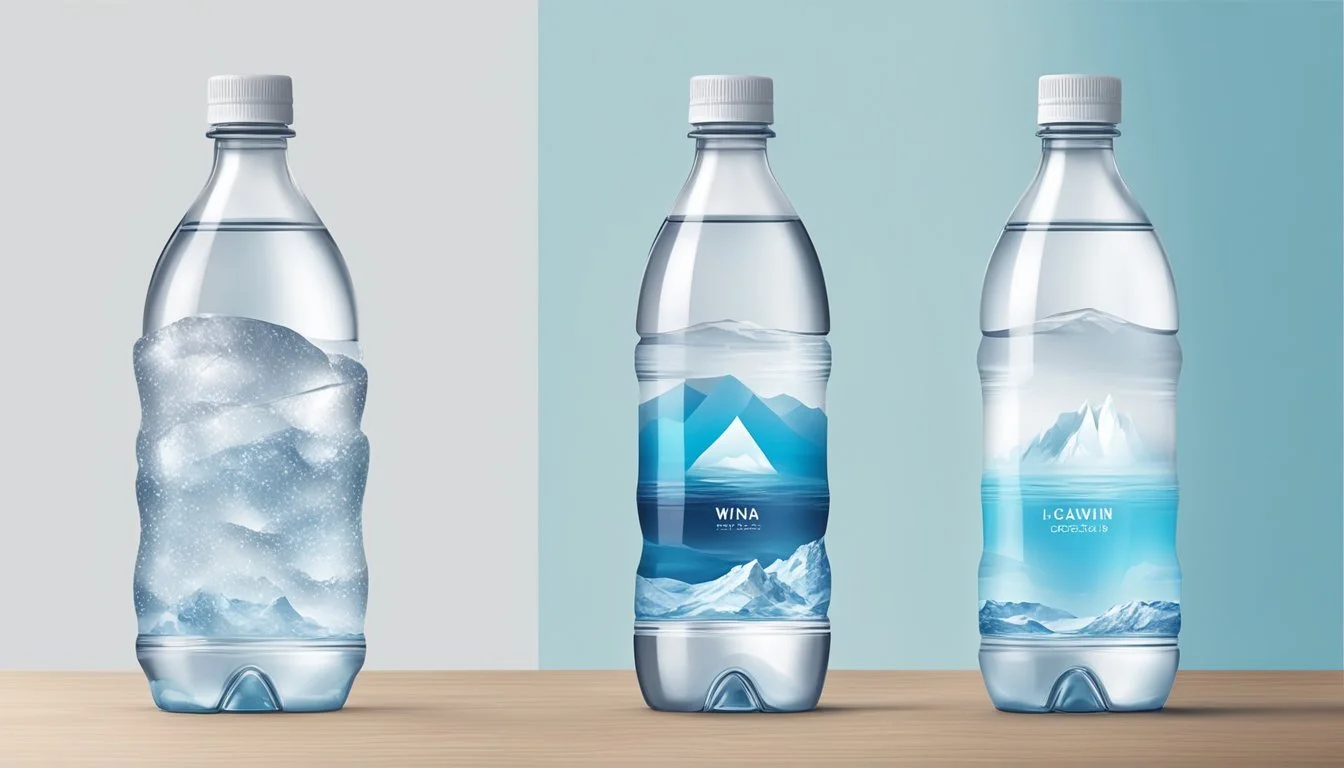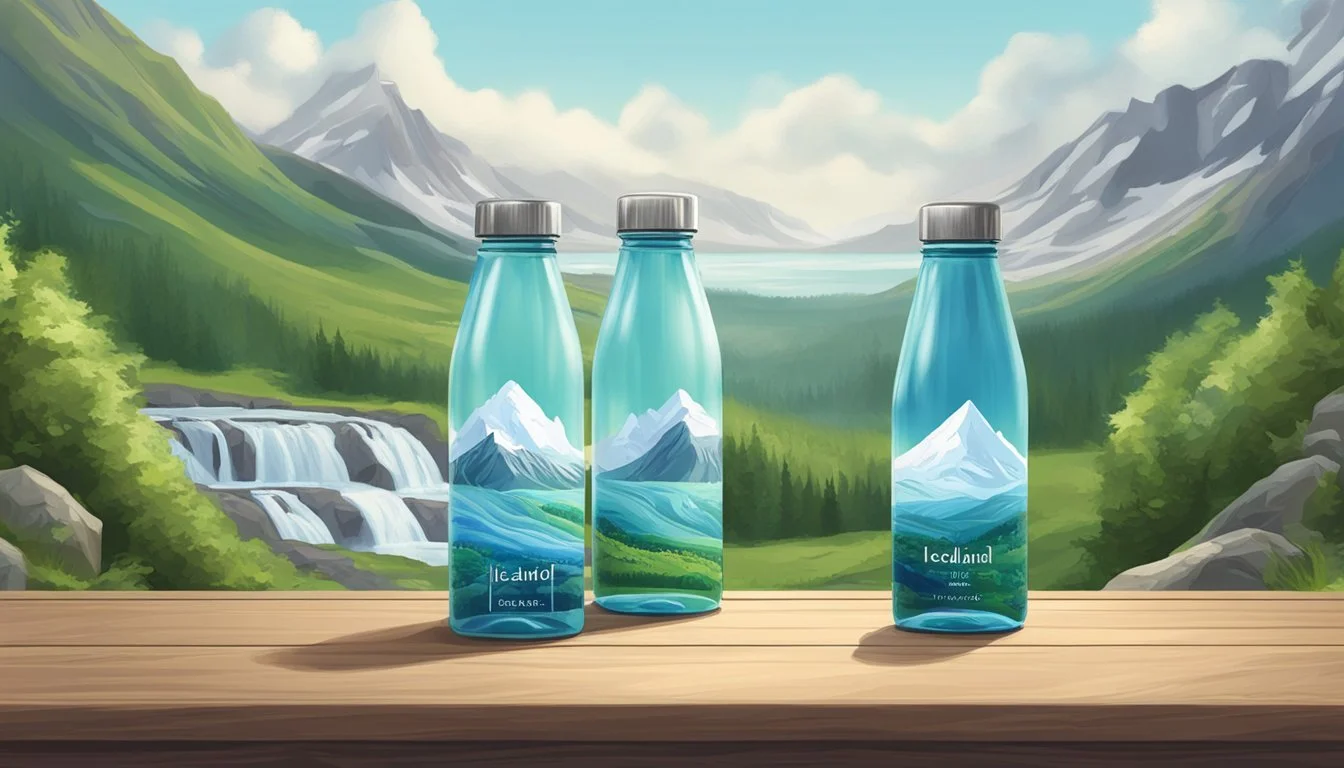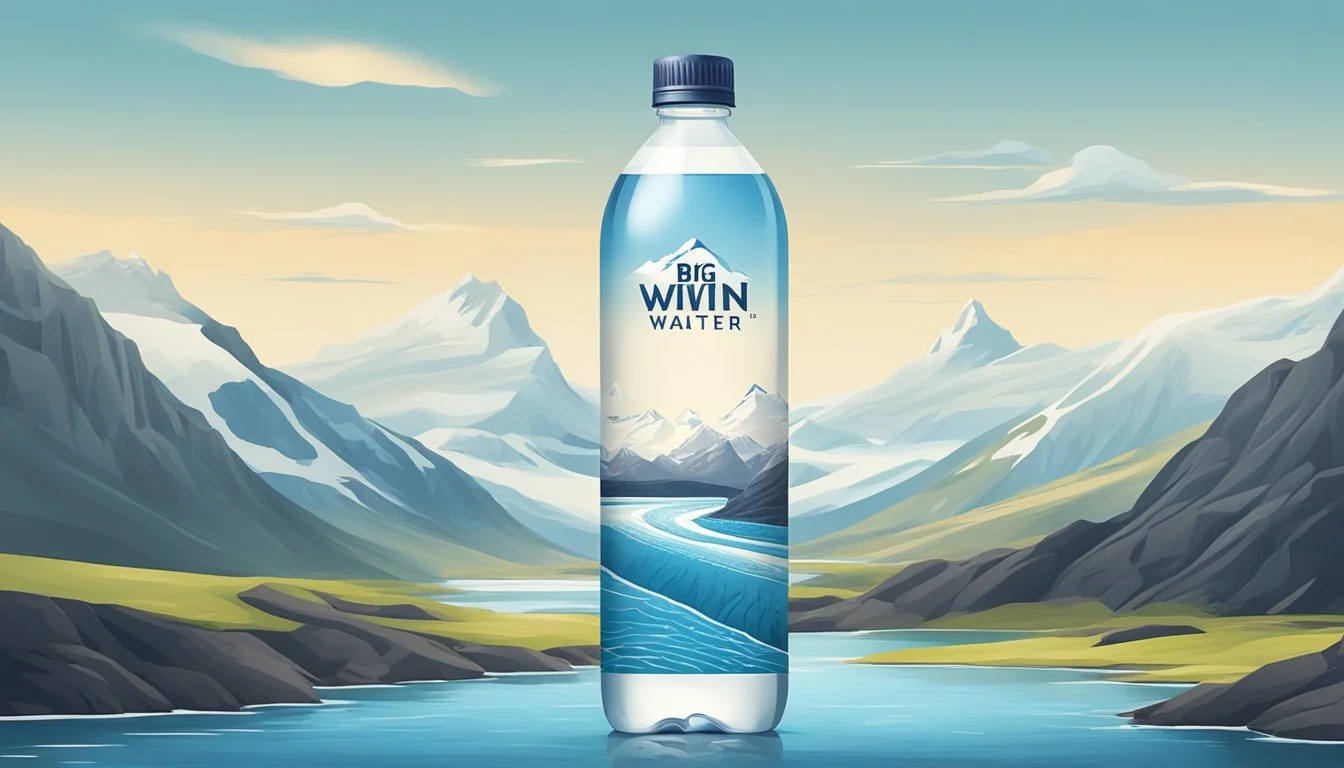Icelandic Glacial vs. Big Win
Which Bottled Water Is Better for You?
When it comes to hydration, not all bottled waters are created equal. Two popular choices on the market today are Icelandic Glacial and Big Win, each offering unique qualities. Icelandic Glacial is celebrated for its purity and rich mineral content, making it a premium choice for those who prioritize taste and health benefits. On the other hand, Big Win, a budget-friendly option available at Rite Aid, provides purified water without breaking the bank.
Icelandic Glacial water originates from the legendary Ölfus Spring in Iceland. This water is renowned for its alkaline properties and natural freshness. Consumers appreciate its balanced mineral composition, which includes calcium, magnesium, and potassium.
In contrast, Big Win offers a straightforward approach to bottled water. Sourced and purified for everyday consumption, it caters to those who seek an affordable solution. While it may lack the luxurious mineral content of Icelandic Glacial, it remains a reliable choice for basic hydration needs.
Understanding Bottled Water
Bottled water is widely consumed for its convenience and perceived purity. This section looks at what defines bottled water, the different types available, and how they are regulated.
What Is Bottled Water?
Bottled water is water that has been packaged in plastic or glass bottles for consumer use. It is often chosen for its convenience, taste, and the belief that it is cleaner or healthier than tap water.
Bottled water can come from various sources, including natural springs, wells, and even municipal supplies. It is treated and purified to meet specific safety standards. Companies like Icelandic Glacial boast pristine sources, aiming to offer higher quality. Important characteristics include mineral content, pH level, and taste.
Types of Bottled Water
Different types of bottled water cater to various preferences and health considerations:
Spring Water: Sourced from underground springs, it contains natural minerals. It is often marketed as pure and healthy due to its origin.
Purified Water: Treated to remove impurities, it typically comes from municipal tap water. Techniques like reverse osmosis and distillation are used.
Mineral Water: Contains naturally occurring minerals and must come from a protected underground source. It is often marketed for its potential health benefits.
Alkaline Water: Has a higher pH level than regular drinking water. It is believed to neutralize acid in the body, though scientific support is limited.
Sparkling Water: Infused with carbon dioxide gas, creating bubbles. It can be naturally carbonated or artificially carbonated.
These types address different consumer needs, from basic hydration to specific health claims.
Labeling and FDA Regulations
The FDA regulates bottled water to ensure safety and proper labeling. Bottled water must comply with the FDA’s quality standards, which are similar to the EPA's regulations for tap water.
Labeling Requirements:
Source Information: The label must disclose the source of the water, whether it’s spring, well, or municipal.
Treatment Details: Any treatment process, such as purification methods, must be listed.
Mineral Content: For mineral or alkaline waters, the mineral content must be specified.
Quality Standards: Bottled water must be free from contaminants and tested regularly. The FDA sets limits on chemicals, bacteria, and other potential hazards.
Consumers rely on these regulations to ensure that the water they purchase is safe and accurately represented.
The Journey of Icelandic Glacial
Icelandic Glacial water is renowned for its purity and high pH level. This water originates from the ancient Ölfus Spring and undergoes natural filtration through layers of lava rock, ensuring its pristine quality.
Origin and Source
Icelandic Glacial water begins its journey at the Ölfus Spring, a natural spring located in southwest Iceland. This spring was formed over 5,000 years ago following a massive volcanic eruption. The spring's underground water sources provide an abundance of fresh water that flows directly from the earth into Icelandic Glacial's state-of-the-art bottling facility.
Only 0.1% of the water that naturally flows into the ocean is bottled, making it a highly sustainable choice.
Natural Filtration and Purity
One of the unique aspects of Icelandic Glacial water is its natural filtration process. The water is filtered through layers of ancient lava rock, a process that enhances its purity and results in a naturally high pH level of 8.4.
This natural alkalinity sets Icelandic Glacial apart from other bottled waters that often rely on additives to achieve a similar pH level. The low mineral content combined with the high pH results in a clean, crisp taste that appeals to many consumers.
Icelandic Glacial Water Brand
The Icelandic Glacial brand emphasizes sustainability and environmental responsibility. It claims to be the world's first CarbonNeutral Certified water, underscoring its commitment to minimizing its carbon footprint throughout the production process.
The water is bottled at a facility designed to ensure the highest quality standards while preserving the natural qualities of the Ölfus Spring water. The brand's efforts in marketing highlight its natural origins, high pH, and eco-friendly practices, appealing to consumers who are conscious of both health and the environment.
Big Win Water Explored
Big Win Water, a relatively lesser-known brand, has established its place among bottled water options. This section covers Big Win’s market position, source and production, and its distribution and accessibility, providing insight into what makes this brand stand out.
Big Win’s Market Position
Big Win Water is positioned as a budget-friendly option in the bottled water market. It is primarily known for its affordability and availability in various retail locations including Rite Aid. As a private label brand, Big Win targets consumers who seek a cost-effective alternative without compromising on basic quality standards. Despite the fierce competition from more premium brands, Big Win maintains a stable presence through strategic pricing and widespread distribution channels.
Source and Production
Big Win Water is purified water, typically sourced from municipal supplies. It undergoes a rigorous purification process to ensure safety and quality. This process usually involves reverse osmosis, micro-filtration, and ultraviolet light treatments. The goal is to remove contaminants and produce water that is clean and palatable. Although it may lack the exotic source of Icelandic Glacial Water, its controlled production process ensures consistent quality.
Distribution and Accessibility
One of Big Win Water's strengths lies in its accessibility. It is widely available in Rite Aid stores across the United States, making it an easy choice for many consumers. The brand also benefits from Rite Aid’s extensive distribution network, ensuring that it is consistently stocked and readily available. This convenience factor, combined with its competitive pricing, makes Big Win a practical option for everyday hydration needs.
Comparative Analysis
In this section, we will compare Icelandic Glacial and Big Win bottled waters focusing on their taste and mineral content, pH level and health implications, and packaging and environmental concerns.
Taste and Mineral Content
Icelandic Glacial is known for its crisp and clean taste, derived from the natural springs of Iceland. It contains balanced amounts of calcium, magnesium, and potassium.
Big Win, a more affordable option, may have a slightly different mineral profile.
Consumers often notice a difference in taste, with Icelandic Glacial being favored for its neutral and refreshing flavor.
Brand Calcium (mg/L) Magnesium (mg/L) Potassium (mg/L) Icelandic Glacial 6.4 2.4 0.7 Big Win* Varies Varies Varies
*Big Win's mineral content can vary based on the source.
pH Level and Health Implications
Icelandic Glacial water has a naturally occurring pH level of 8.4, which is alkaline. This can be beneficial for those looking to balance their body's pH levels.
Big Win bottled water's pH can vary, but it usually falls within the neutral range of 7 to 7.5.
A neutral pH is acceptable for most people but may not offer the same perceived health benefits as alkaline water.
Brand pH Level Icelandic Glacial 8.4 Big Win 7-7.5
Packaging and Environmental Concerns
Icelandic Glacial prides itself on using BPA-free, recyclable plastic bottles. They have initiatives aimed at reducing their carbon footprint, including using 15% recycled plastic.
Big Win's packaging consists mostly of recyclable plastic, but it may not have the same environmental certifications as Icelandic Glacial.
Both brands aim to minimize their environmental impact, though Icelandic Glacial appears to take additional steps in sustainability.
Brand Recyclable BPA-Free Environmental Initiatives Icelandic Glacial Yes Yes Yes Big Win Yes Yes Limited
Consumer Perspectives and Brand Reputation
Icelandic Glacial and Big Win are reputable in their own right among bottled water brands, each boasting unique attributes that influence consumer opinions and market standing.
Market Perception
Customers often praise Icelandic Glacial for its rich taste and high purity. Sourced from Iceland's Olfus Spring, it is marketed as premium water with environmental responsibility. Positive reviews highlight its clean, crisp flavor and minimal TDS (Total Dissolved Solids) content.
Big Win, primarily found in retail stores, is seen as a value brand. It doesn't always receive as high marks for taste or purity compared to Icelandic Glacial. However, it is appreciated for being affordable and widely accessible. Its consumer base tends to focus on cost-effectiveness.
Water Brand Awards and Recognition
Icelandic Glacial has garnered several accolades for its commitment to quality and sustainability. It is one of the world’s first bottled waters to be certified as CarbonNeutral, emphasizing its environmental impact. Additionally, its taste and purity have earned it various high marks from connoisseurs and rating bodies.
Big Win, while less decorated, is recognized for its market penetration. Retail chains that carry Big Win frequently note its importance in offering an affordable bottled water option. Although it may not boast the same level of award prestige as Icelandic Glacial, its recognition comes from customer loyalty and brand consistency.
Health and Hydration Benefits
Icelandic Glacial and Big Win bottled waters offer different benefits when it comes to supporting health through hydration and essential minerals.
Hydration and Electrolytes
Hydration is crucial for maintaining bodily functions, and electrolytes play a vital role in this process. Icelandic Glacial water is sourced from natural springs and is known for its purity. It naturally contains electrolytes such as calcium, magnesium, and potassium, which help to replenish the body's electrolyte balance, especially after intense physical activity or in hot climates.
Big Win water also focuses on offering hydration but may contain fewer naturally occurring electrolytes depending on its source and treatment process. Some versions might add electrolytes artificially to enhance hydration properties. For many people, the presence of electrolytes in water can aid muscle function and overall well-being, making these elements an important consideration when choosing a bottled water.
The Role of Minerals in Hydration
Minerals like calcium, magnesium, and potassium found in bottled water contribute significantly to hydration and health. Icelandic Glacial water contains a higher pH level, often above 8.0, which some believe helps to better maintain the body's optimal pH balance.
Calcium supports muscle function and bone health, while magnesium aids in nerve function and energy production. Potassium is essential for proper cell function and can prevent cramps during exercise. Although Big Win water might have fewer naturally occurring minerals, understanding the mineral content is crucial for those seeking specific health benefits from their bottled water choice.
Environmental Sustainability
When considering environmental sustainability, both Icelandic Glacial and Big Win bottled waters have specific impacts related to their sources, bottling processes, and broader sustainability initiatives.
Impact on Natural Springs
Icelandic Glacial sources its water from the Ölfus Spring in Iceland, one of the world’s largest and naturally replenished springs.
This ensures minimal depletion of the water source, aligning with sustainable practices.
The company also emphasizes the protection of the surrounding ecosystem.
Big Win, being a more generic brand, often sources water from multiple locations.
This could lead to a varied environmental impact depending on the location's regulations and sustainability practices.
Ensuring that these sources are managed sustainably is crucial for maintaining ecological balance.
Bottling Process and Carbon Footprint
Icelandic Glacial has taken steps to make its bottling process carbon neutral.
Their facilities use renewable energy, reducing the carbon footprint significantly.
They also focus on using environmentally friendly materials for their bottles, which are 100% recyclable.
On the other hand, Big Win uses plastic bottles, which contribute to plastic waste if not properly recycled.
Details about their carbon reduction initiatives are less transparent, making it harder to gauge their environmental impact fully.
Reducing carbon emissions during the production process is essential for mitigating climate change.
Global Efforts in Water Sustainability
Icelandic Glacial engages in various global sustainability efforts.
One notable initiative is their partnership with CarbonNeutral® to offset their carbon emissions.
They also hold several environmental certifications that verify their commitment to sustainability.
Big Win participates in local recycling programs to encourage consumers to recycle their plastic bottles.
However, global efforts and certifications for sustainability may not be as prominently highlighted.
Participation in global initiatives helps to create a broader impact beyond local waste management practices.
Conclusion: Choosing the Right Water for You
When selecting between Icelandic Glacial and Big Win bottled waters, several factors come into play.
Purity is crucial. Icelandic Glacial boasts incredibly pure water, sourced from Iceland’s natural springs. Big Win also offers clean water, but its source may not match Icelandic Glacial’s pristine origins.
Alkalinity is another consideration. Icelandic Glacial has a naturally high pH level, promoting alkalinity. Big Win’s pH levels might be lower, depending on the source and filtration process.
Balance involves the mineral content in the water. Icelandic Glacial includes balanced levels of calcium, magnesium, and potassium. Big Win provides essential minerals, but the balance might not be as naturally achieved.
For water quality, Icelandic Glacial adheres to stringent standards and is well-regarded globally. Big Win meets local and federal regulations, ensuring safe consumption.
In terms of taste profile, Icelandic Glacial is often praised for a clean, refreshing taste. Big Win offers a satisfactory taste, but subjective preferences vary.
Health aspects are key. The balanced minerals in Icelandic Glacial support daily hydration needs effectively. Big Win provides a healthy hydration option, yet may lack the same mineral richness.
Choosing the right water depends on individual preferences for purity, alkalinity, balance, water quality, taste profile, and health benefits. Both options serve well, but Icelandic Glacial stands out in several key areas.
More About Icelandic Glacial
Acqua Panna vs Icelandic Glacial: Which Bottled Water is Better?
Aquafina vs Icelandic Glacial: Which Bottled Water is Better?
Arrowhead vs Icelandic Glacial: Which Bottled Water is Better?
Boxed Water vs Icelandic Glacial: Which Bottled Water is Better?
Core Hydration vs Icelandic Glacial: Which Bottled Water is Better?
Deer Park vs Icelandic Glacial: Which Bottled Water is Better?
Essentia vs Icelandic Glacial: Which Bottled Water is Better?
Eternal vs Icelandic Glacial: Which Bottled Water is Better?
Ice Mountain vs Icelandic Glacial: Which Bottled Water is Better?
Icelandic Glacial vs 1907water: Which Bottled Water is Better?
Icelandic Glacial vs 7-Select: Which Bottled Water is Better?
Icelandic Glacial vs Alkaline88: Which Bottled Water is Better?
Icelandic Glacial vs Antipodes: Which Bottled Water is Better?
Icelandic Glacial vs Aqua Carpatica: Which Bottled Water is Better?
Icelandic Glacial vs Big Chill: Which Bottled Water is Better?
Icelandic Glacial vs BodyArmor: Which Bottled Water is Better?
Icelandic Glacial vs Cascade Mountain: Which Bottled Water is Better?
Icelandic Glacial vs Castle Rock: Which Bottled Water is Better?
Icelandic Glacial vs CBD Living: Which Bottled Water is Better?
Icelandic Glacial vs Crystal Geyser: Which Bottled Water is Better?
Icelandic Glacial vs Crystal Lake: Which Bottled Water is Better?
Icelandic Glacial vs Erewhon: Which Bottled Water is Better?
Icelandic Glacial vs Essence pH10: Which Bottled Water is Better?
Icelandic Glacial vs Hawaii Volcanic: Which Bottled Water is Better?
Icelandic Glacial vs Hawaiian Springs: Which Bottled Water is Better?
Icelandic Glacial vs Just Water: Which Bottled Water is Better?
Icelandic Glacial vs Kirkland Signature: Which Bottled Water is Better?
Icelandic Glacial vs LIFEWTR: Which Bottled Water is Better?
Icelandic Glacial vs Liquid Death: Which Bottled Water is Better?
Icelandic Glacial vs Mananalu: Which Bottled Water is Better?
Icelandic Glacial vs Mountain Valley Spring Water: Which Bottled Water is Better?
Icelandic Glacial vs Nestle Pure Life: Which Bottled Water is Better?
Icelandic Glacial vs Open Water: Which Bottled Water is Better?
Icelandic Glacial vs Perrier: Which Bottled Water is Better?
Icelandic Glacial vs Poland Spring: Which Bottled Water is Better?
Icelandic Glacial vs Proud Source: Which Bottled Water is Better?
Icelandic Glacial vs Pure Life: Which Bottled Water is Better?
Icelandic Glacial vs Purely Sedona: Which Bottled Water is Better?
Icelandic Glacial vs Refreshe: Which Bottled Water is Better?
Icelandic Glacial vs Richard's Rainwater: Which Bottled Water is Better?
Icelandic Glacial vs San Pellegrino: Which Bottled Water is Better?
Icelandic Glacial vs Simple Truth: Which Bottled Water is Better?
Icelandic Glacial vs Smartwater: Which Bottled Water is Better?
Icelandic Glacial vs Solan de Cabras: Which Bottled Water is Better?
Icelandic Glacial vs Starkey: Which Bottled Water is Better?
Icelandic Glacial vs Talking Rain AQA: Which Bottled Water is Better?
Icelandic Glacial vs The Well: Which Bottled Water is Better?
Icelandic Glacial vs Topo Chico: Which Bottled Water is Better?
Icelandic Glacial vs Tru Alka: Which Bottled Water is Better?
Icelandic Glacial vs Waiakea: Which Bottled Water is Better?
Icelandic Glacial vs Weird Water: Which Bottled Water is Better?
Icelandic Glacial vs Whole Foods 365: Which Bottled Water is Better?
Icelandic Glacial vs Whole Foods Italian Still Mineral water: Which Bottled Water is Better?
Icelandic Glacial vs Zephyrhills: Which Bottled Water is Better?
Icelandic Glacial vs HFactor: Which Bottled Water is Better?








